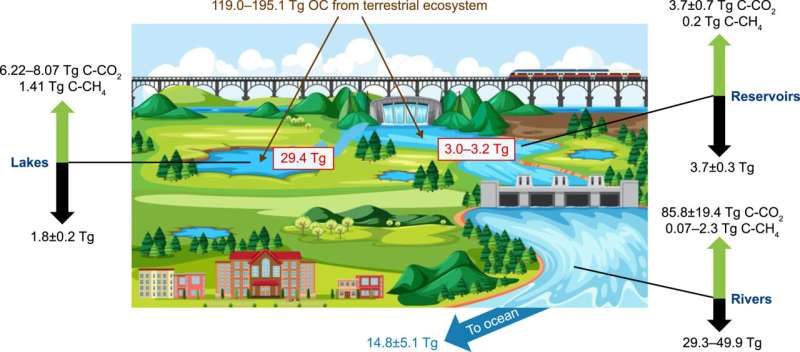This article has been reviewed according to Science X's editorial process and policies. Editors have highlighted the following attributes while ensuring the content's credibility:
fact-checked
proofread
Re-estimating China's lake CO₂ flux considering spatiotemporal variability

The variability of lake partial carbon dioxide pressure (pCO2) introduces uncertainty into CO2 flux estimates. Knowing the variation pattern of pCO2 is important for obtaining an accurate global estimation.
In an article published in Environmental Science and Ecotechnology, researchers examined seasonal and trophic variations in lake pCO2 based on 13 field campaigns conducted in Chinese lakes from 2017 to 2021. They found significant seasonal fluctuations in pCO2, with decreasing values as trophic states intensify within the same region.
These pCO2 dynamics resulted in variable CO2 emissions, with lakes exhibiting different trophic states, and saline lakes differing from freshwater lakes (−23.1 ± 17.4 vs. 19.3 ± 18.3 mmol m−2 d−1). These spatiotemporal pCO2 variations complicate total CO2 emission estimations.
Using area proportions of lakes with varying trophic states and salinity in China, the researchers estimate China's lake CO2 flux at 8.07 Tg C yr−1. In future studies, the importance of accounting for lake salinity, seasonal dynamics, and trophic states must be used to enhance the accuracy of large-scale carbon emission estimates from lake ecosystems in the context of climate change.
The study indicated that the current annual total CO2 fluxes from lakes in China might be overestimated when lake trophic states and salinity are ignored.
To improve the accuracy of regional and large-scale estimations of carbon emissions and carbon budgets in lake ecosystems affected by seasons, salinity, and trophic states, further investigations into CO2 emissions from lakes in other parts of the world are warranted.
More information: Zhidan Wen et al, Re-estimating China's lake CO2 flux considering spatiotemporal variability, Environmental Science and Ecotechnology (2023). DOI: 10.1016/j.ese.2023.100337
Provided by Eurasia Academic Publishing Group





















